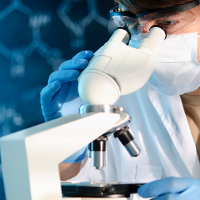 In their new paper, Evergreening of Pharmaceutical Exclusivity: Sorting Fact from Misunderstanding and Fiction, Professors Kristina Acri née Lybecker and Mark Schultz, along with CPIP John F. Witherspoon Legal Fellow David Lund, analyze how the term “evergreening” is used in the context of pharmaceuticals.
In their new paper, Evergreening of Pharmaceutical Exclusivity: Sorting Fact from Misunderstanding and Fiction, Professors Kristina Acri née Lybecker and Mark Schultz, along with CPIP John F. Witherspoon Legal Fellow David Lund, analyze how the term “evergreening” is used in the context of pharmaceuticals.
After sorting through the vagaries and rhetorical excesses that restrict meaningful discussion, they identify seven categories that capture typical uses of the term:
- The assertion that the duration of existing patents can generally be “renewed” or “extended,” for very long or indefinite periods;
- Obtaining additional patents related to a particular pharmaceutical or treatment;
- The use of laws that allow patent owners to restore some portion of their term lost due to governmental delays;
- The use of laws that give companies a limited term of exclusive time to market a drug;
- Regulatory barriers that frustrate potential generic competitors’ ability to enter a market;
- Business practices that largely rely on marketing to advantage innovators; and
- Settling lawsuits with generic manufacturers that seek to invalidate a patent.
In addition to identifying practices claimed to be “evergreening,” this paper also discusses the impact and value of these practices. For most situations, the practices reflect specific policies that are having their desired effect, such as the increase in studies of drug safety and efficacy in children brought about by pediatric exclusivity. In some cases, the practices are simply legal impossibilities. Only in a few specific situations related to regulatory requirements do the authors observe strategic opportunities that could plausibly be considered problematic.
Because of the number of practices and the diversity of value those practices bring to pharmaceutical commercialization, the term obscures far more than it illuminates. Discussions about patents, exclusivities, and public health would benefit greatly from discussing the practices and policies specifically, rather than attempting to use a nebulous term such as “evergreening.”
The paper, which started as part of Professor Acri’s work through CPIP’s Thomas Edison Innovation Fellowship, can be found here. The abstract is copied below.
***
Evergreening of Pharmaceutical Exclusivity: Sorting Fact from Misunderstanding and Fiction
Abstract
When people use the term “evergreening” to describe pharmaceutical industry practices, they typically display an unwarranted confidence that they know exactly what they mean both descriptively and normatively. However, a consistent and coherent definition of “evergreening” does not appear to exist.
This article surveys legal, academic, trade, and popular sources that use the term “evergreening” to develop a taxonomy of the policies and actions to which the term is applied. We find that the term is used to cover roughly seven categories of circumstances. Our review finds that the use of the term, taken as a whole, is more typified by the diversity of practices to which it applies rather than any consistent meaning. There are some commonalties, but they exist mostly at a general level.
We then analyze these seven categories to determine if the rhetoric matches the reality. Evergreening is most frequently used as a pejorative term, with a common implication that the “evergreener” is engaged in some sort of strategic behavior at least, or perhaps an immoral if not illegal practice. However, the categorical application of a pejorative term such as “evergreening” to any of the general policies and types of actions we examine is unwarranted and inappropriate. Proponents often apply the term to ordinary use of legal rights as they were designed and the concept makes no meaningful distinction between beneficial and problematic actions.
Unfortunately, “Evergreening” is a key concept in health policy that obscures far more than it illuminates. Once the term is stripped of misunderstandings and loose rhetoric, little of value remains. This is not to say that all policies and actions that extend or preserve exclusive rights are prudent or defensible in individual cases. Rather, the discussion regarding patents and public health would gain much clarity and rationality from addressing the disparate things labeled as “evergreening” on their individual merits.
To read the paper, please click here.
